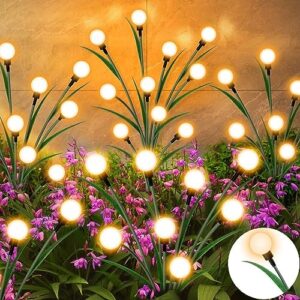So you’ve decided to bring some greenery into your home by adding indoor plants – congratulations! Not only do houseplants add a touch of nature and beauty to your living space, but they also come with a myriad of health benefits. From boosting mood and productivity to purifying the air, indoor plants are a must-have for any home. But just like any living thing, plants require care and attention to thrive. Here are some simple tricks to keep your houseplants healthy and happy.
1. Light up their lives
One of the most important things to consider when caring for indoor plants is light. Different plants have different light requirements, so it’s essential to understand the needs of each of your houseplants. Some plants thrive in bright, indirect light, while others prefer low light conditions. Make sure to place your plants in an area that receives the right amount of light for their specific needs. If your plant isn’t getting enough light, consider investing in a grow light to supplement natural light.
2. Water wisely
Overwatering is one of the most common mistakes plant owners make. It’s essential to understand the watering needs of your houseplants and to water them accordingly. Before watering, check the soil to see if it’s dry to the touch. Different plants have different watering preferences, so it’s important to research how often each of your plants should be watered. In general, it’s better to underwater than to overwater, as most indoor plants are more likely to survive being too dry than too wet.
3. Don’t forget to feed
In addition to water, plants also need nutrients to thrive. Fertilizing your houseplants regularly can help ensure they have the nutrients they need to grow strong and healthy. There are many different types of plant fertilizers available, so be sure to choose one that is appropriate for the type of plants you have. Follow the instructions on the fertilizer package for best results, and be careful not to over-fertilize, as this can harm your plants.
4. Keep the humidity level just right
Indoor plants, especially tropical plants, thrive in humid environments. If your home tends to be dry, consider adding a humidifier to increase the humidity levels around your plants. You can also mist your plants with water occasionally to help keep them hydrated. However, be careful not to mist plants that are prone to fungal diseases, as this can promote the growth of mold.
5. Monitor for pests
Just like outdoor plants, indoor plants are susceptible to pests such as aphids, mealybugs, and spider mites. To keep your plants pest-free, regularly inspect the leaves and stems for any signs of pests. If you do notice pests, treat your plants with the appropriate insecticidal soap or neem oil to get rid of them. It’s important to catch pest infestations early to prevent them from spreading to other plants.
6. Prune and trim regularly
Regular pruning and trimming of your houseplants can help promote healthy growth and prevent leggy or overcrowded plants. Remove any dead or yellowing leaves, as well as any damaged or diseased growth. You can also prune your plants to encourage new growth and shape them to your liking. Be sure to use clean, sharp pruning shears to prevent damage to your plants.
7. Repot when needed
As your plants grow, they may outgrow their pots and become root-bound. Repotting your plants into larger pots allows them to continue growing and thriving. Look for signs that your plants may need repotting, such as roots growing out of the drainage holes or crowded roots on the surface of the soil. When repotting, be sure to use fresh potting soil and a pot that is 1-2 inches larger in diameter than the current pot.
8. Do your research
Every plant is unique, so it’s essential to do your research and understand the specific needs of each of your houseplants. Take the time to learn about the light, water, humidity, and temperature requirements of your plants, as well as any potential pests or diseases they may be prone to. By understanding and meeting the needs of your plants, you can help ensure they thrive and remain healthy for years to come.
In conclusion, caring for indoor plants doesn’t have to be complicated or overwhelming. By following these simple tips and tricks, you can keep your houseplants healthy and happy. Remember to provide the right amount of light, water, and nutrients, monitor for pests, prune and trim regularly, repot when needed, and do your research to understand the specific needs of each of your plants. With a little bit of care and attention, your indoor plants will thrive and bring beauty and joy to your home.






